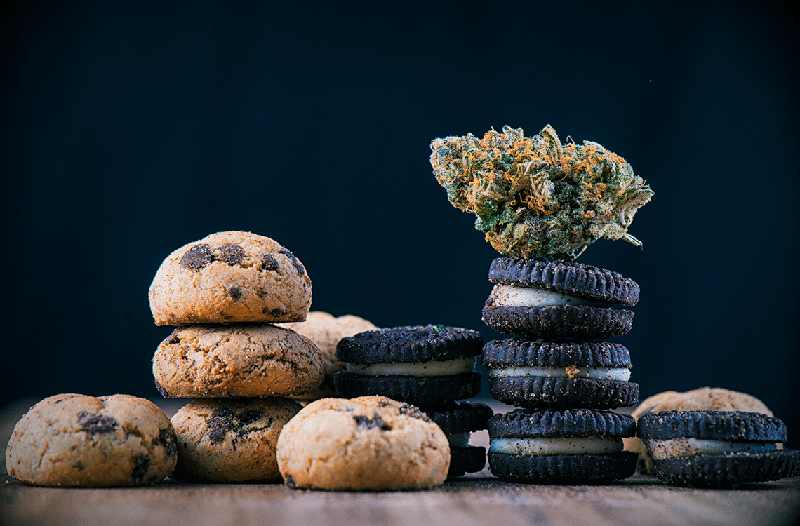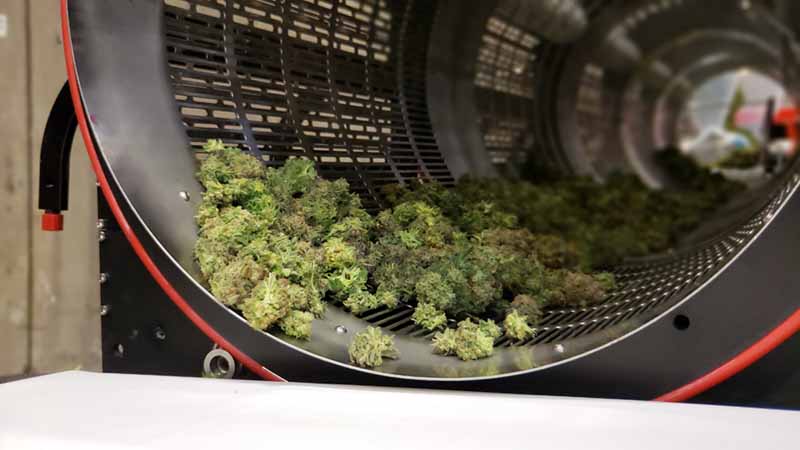The sale of edibles rose 60% in 2020 to reach $1.23 billion, as cannabis morphs into a consumer packaged goods industry with offering convenient consumption methods. It is hoped infused food and drink will normalize the industry and increase consumer accessibility, to attract millions of newcomers. This shift in market demand will encourage companies to scale production, expanding harvest sizes to targeting extract products. Striking the right balance of quantity and quality will be key, in addition to streamlining overheads to counterbalance processing costs and maintain competitivity.
Indoor vs. Outdoor
The demand for edibles and beverages will largely favour outdoor growers, with access to large swathes of land and the best, and cheapest, light source available – the sun. The cost of producing a single gram of cannabis can cost $2 indoors, compared to $0.25 outdoors. Although the cannabinoid content, and extraction value, may be lower per plant, this is easily off set by the sheer volume of plants that can be grown.
Indoor growers will still benefit from the demand for infused products, but as a channel through which unwanted flower could be diverted. Considering Canadian producers had amassed 1.5 million pounds of unsold inventory last year, this could be an unexpected boon to claw back historic losses. However, the surging popularity of edibles should not become a safety net for growers or excuse to not elevate flower standards, with those unable to compete on quality being forced to do so on cost.
Despite the surging popularity of edibles, dried flower sales still account for 76% of the Canadian market and remain the most lucrative product category for growers. However, it is also the most competitive product category and the preferred format for connoisseurs, who have the highest tolerance, standards and expectations. Conversely, edibles are popular with newcomers and their sales rose 150% in 2020 to top $97 million. They also make up a significant portion of mature cannabis markets, as the preferred consumption method in California, which indicates the product format could be a dominant force in the future.

An Appetite for Automation
Growers that restructure for the accelerated adoption of edibles today, will be better positioned to profit from heightened consumer demand tomorrow. However, this needs to be tactically for growers to avoid overextending themselves and prematurely scaling operations before they can reap the rewards. This was a common issue at the dawn of legalization, with organizations expanding into new markets long before they created revenue. The safest way to scale operations is incrementally, slowly but steadily ramping production to satiate the growing market.
To cultivate cannabis for extraction purposes rather than smokable flower, growers need significantly larger crop sizes. To keep production costs down they must forego artisanal cultivation methods, which require an extensive and expensive workforce, in favour of automated solutions. As harvesting is frequently the most labour-intensive production process, it is also where producers can make substantial savings when scaling production.
Harvesting can make or break a crop, whatever size the operation. Even a micro-cultivator limited to 2,000 sq. ft will produce 175 lbs of flower a harvest, which would take a dozen employees over two weeks to trim. With rising wages the process will get progressively more expensive, eating away at an operation’s bottom line without sufficiently lifting the quality of finished flower. When producing crops many times this size, manually harvesting crops is even less commercially viable and relies on specialized cannabis and hemp harvesting solutions.

Perfecting the trim on flower destined for extraction purposes isn’t necessary, but maintaining a tight consistent trim still is. Processors crave biomass with the highest cannabinoid to weight ratio, so the ability to remove anything not laden with trichomes efficiently is essential. To maintain trichomes throughout the process, look for innovations with non-stick FDA approved coatings, which prevent sticky resin glands from adhering to the trimmer’s surface. The best solutions benefit from diverters, to adjust the movement of cannabis through the machine and manage the final cut. This ensures a tight trim every time, with collection systems storing any sugar leaves removed to maximize the harvest’s value.
For industrial sized operations, CenturionPro has integrated its industry leading innovations into Herculean hemp and cannabis harvesting technologies. Delivering up to 840,000 cuts per minute, the XL 10.0 provides unparalleled processing power with a feed rate of wet material up to 3000 lbs per hour (600 lbs dry). This accommodates for even the biggest grows targeting the burgeoning extraction markets, whether recreational edibles or medical oils.
To help scale commercial facilities CenturionPro devised the Rail Systems, which enable growers to connect their award-winning trimming solutions end-to-end. This provides the ability to add additional trimmers to satiate increased demand, better matching harvesting throughput to grow size in the process. This incremental expansion negates substantial upfront costs, mitigating the risk of operations overstretching themselves and providing protection against market volatility.
To identify which harvesting solutions are best suited for your grow size, visit the CenturionPro product selector.
As a supplier of harvesting automation solutions, CenturionPro is committed to continue servicing customers during the COVID-19 crisis. By doing so we hope to improve the automation of the world’s cannabis producers. Allowing them to meet the growing demand while still complying with government-imposed restrictions and recommendations. To speak with us about how to improve harvesting automation at your farm or facility, please contact us at info@cprosolutions.com or by phone at 1-855-535-0558 or 1.604.457.1101.
Need More Guidance?



